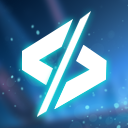Today we sat down with Andrius Jaškauskas, founder, and CEO of Codyfight, to discuss token utilities and the complex yet fascinating way the Codyfight ecosystem works.
Andrius is an educated software engineer with a deep passion for games. He has previously worked as a software engineer in other companies and studied a bachelor’s degree in software engineering and a master in game and media technologies. Codyfight combines two of his biggest passions: software and gaming.
Token utilities
Why does Codyfight need a token?
Codyfight is a competitive game. This means that gamers will be fighting for rewards or performing tasks to earn various benefits. The ultimate goal of the game is to win, which ultimately falls in earning tokens. However, this is not exclusive to Codyfight, many games use the formula of rewarding their players with valuable items.
However, there is a big difference. Codyfight is an innovative experience in the Play to Earn gaming industry. While other games require constant grinding or have a high barrier of fees to participate, Codyfight changes this phenomenon by opening a space for gamers and AI to hold a balanced competition, where efforts are rewarded with tokens. Codyfight’s mission is to blur the boundaries between AI and humans while providing value and benefits for gamers’ efforts.
Players can earn tokens in different ways. First of all, through competitive gaming in tournaments and championships. But there are many other opportunities for players to win CTOKs. In the case of artists, they can sell skins and earn rewards for their crafts. In the case of programmers, they can build bot farms to receive income passively or even sell their codes.
In summary, CTOK has plenty of utilities, inside and outside the game:
- Buying CTickets to go inside the Arena to battle other Codyfighters as well as purchasing additional Arena entries and facing in-game challenges
- Buying NFT skins to customize and repair your robots
- Creating and selling NFTs in the community market
- Participating in Championships and Tournaments
- Staking for higher rewards and exclusive NFTs
- Trading and selling NFTs outside of the game
- Impacting the decisions of the gameplay experience
- Buying, renting and selling AI codes
- Renaming and re-styling skins in the Robot Forge
Codyfight’s ecosystem is based on tokens to function. However the flow of tokens is complex and there are different parts involved, which consist of:
- The Arena
- The Marketplace
- Sellers
- Buyers
Each one of these parts holds a symbiotic relationship between each other, liberating and accepting tokens from gamer’s actions, and therefore keeping an open flow where CTOK’s will be going through different hands, while Codyfight takes a small percentage. Like bees that fly around flowers pollinating their seeds.
Let’s examine an example to better understand its flow.
A gamer that wants to participate in an Arena battle will buy a CTicket to enter. CTickets are a special type of NFT that serves as an incentive for competitive gaming. Another player will buy another CTicket to face his opponent. From the amount of those CTickets, a small percentage will be for Codyfight and the rest will go to the winner.
The winner will earn rewards that will be traded in the marketplace for new skins, AI code, etc. Those tokens will be part of other players that can be artists, developers, or regular gamers, and at the same can earn and trade with tokens in the marketplace or outside of it.
Then there is another layer that keeps the flow active. The percentage that Codyfight takes, will also be for feeding tokens to other parts of the game, for example the in-game free challenges. One of these challenges consists in catching different characters like Llama and Raccoon to earn some extra rewards. The tokens that gamers earn from these challenges come from the percentage Codyfight takes on the competitive arena as well as a percentage from selling and trading on the marketplace.
Any artist can draw a skin and sell it to other players in the marketplace. Artists get rewards, but a small percentage of that sale is used to feed tokens to those in-game challenges. This means that the ecosystem is constantly exchanging tokens from one place to another. Competitive games feed in-game-free challenges as well as the marketplace. Gamers at the same time feed the marketplace with tokens that will be back in the Arena for battles. This keeps a balanced universe where the flow of tokens is constant and dynamic.
In summary
Codyfight’s ecosystem is complex and unique. CTOK is the fuel of that ecosystem that keeps its pieces and players active and evolving. There are many utilities of tokens inside the game, as well as outside, and players have the choice to think of smart ways to maximize their rewards, whether it’s through competitive gaming or passive income. Players also have the chance to connect with other players, learn and engage in different activities, creating an exciting community where the game is constantly finding new ways to surprise its players.
Robots need a Ckey and an NFT skin to battle in the Arena and players can choose to buy the pieces in the marketplace or engage in challenges to get exclusive rewards. Players can build bot farms with their Codyfight account and multiple Ckeys to get tokens passively, as well as artists that can sell NFT skins on the marketplace and earn rewards.
Don’t forget to follow us on our socials:
Telegram (Announcement) | Telegram (Community) | Twitter | Website | Github | Discord | Facebook | Youtube | TikTok
